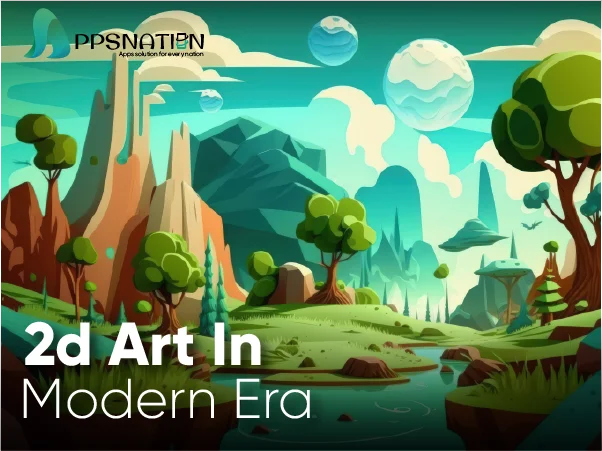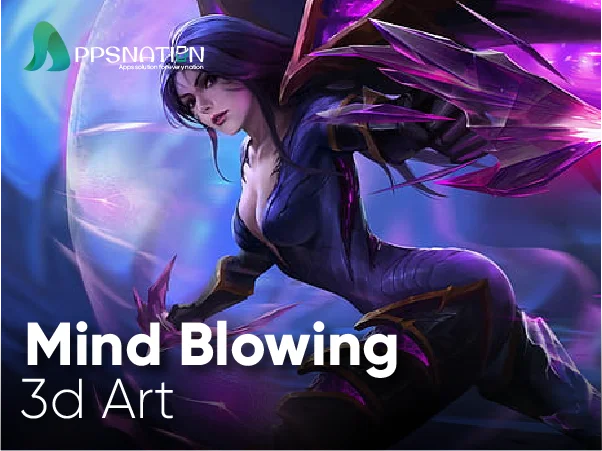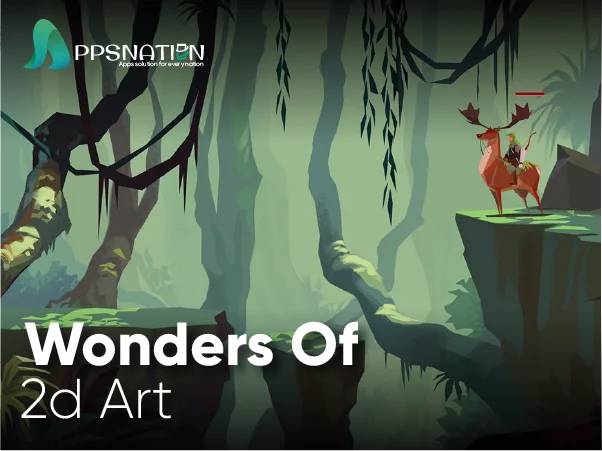In the realm of art, 2D creations hold a unique place. From ancient cave paintings to contemporary digital illustrations, 2D art has evolved and adapted with the passage of time. In the modern era and beyond, this form of artistic expression continues to captivate audiences and leave a lasting impact. This article explores the significance of 2D art, its evolution, and its prospects for the future.
Introduction
| 1 | Step-by-Step Guide: How to Make a Metaverse Avatar for Hair Loss
|
| 2 | Contemporary 2D Art Forms
|
| 3 | Influence of Technology on 2D Art
|
| 4 | The Appeal of 2D Art in the Modern Era
|
| 5 | Future of 2D Art
|
| 6 | Conclusion |
| 7 | FAQ’s |
The Rich History of 2D Art
- Prehistoric Origins: Human artistic expression dates back thousands of years, with some of the earliest examples found in prehistoric cave paintings. These 2D artworks, created by our ancestors, served as a means of communication, storytelling, and documenting their surroundings. They provide valuable insights into our collective history and evolution as a species.
- Classical Period: During the classical period, 2D art flourished in civilizations such as ancient Greece and Rome. Paintings and mosaics adorned walls, vases, and public spaces, depicting mythological narratives and everyday life. Artists employed techniques like fresco and tempera, showcasing their mastery of color and form.
- Renaissance and Baroque Eras: The Renaissance period marked a pivotal moment in the development of 2D art. Artists like Leonardo da Vinci and Michelangelo revolutionized the field with their mastery of perspective and anatomical accuracy. This era witnessed the emergence of oil painting as a prominent medium, allowing for greater depth and realism.
The Baroque period followed, characterized by dramatic lighting, intense emotions, and intricate detailing. Artists such as Caravaggio and Rembrandt crafted powerful compositions that evoked a sense of awe and fascination. - Modern Art Movements: The 20th century saw the rise of various art movements that pushed the boundaries of 2D art. From the vibrant colors of Fauvism to the abstract forms of Cubism, artists like Henri Matisse and Pablo Picasso challenged traditional notions of representation. This era also witnessed the advent of collage, photomontage, and other innovative techniques that expanded the possibilities of 2D art.
Contemporary 2D Art Forms
- Traditional Techniques: Despite the influx of digital tools, many artists continue to embrace traditional 2D art techniques. Oil, acrylic, watercolor, and pastel paintings still hold their allure, allowing artists to create unique textures, play with light and shadow, and evoke a sense of nostalgia. These timeless techniques preserve the connection to historical art practices while offering a sense of authenticity.
- Digital Art: The digital revolution has revolutionized the world of 2D art. With the advent of powerful software and hardware, artists can create intricate and stunning artworks using digital tools. Digital painting, vector illustrations, and photo manipulation are just a few examples of the vast possibilities that technology has unlocked. This medium offers artists the freedom to experiment, iterate, and easily share their creations with a global audience.
- Mixed Media: The blending of traditional and digital techniques has given rise to mixed media art. Artists combine various materials, such as paint, ink, collage elements, and digital overlays, to create visually compelling and thought-provoking artworks. Mixed media allows for the exploration of new textures, juxtapositions, and narratives, pushing the boundaries of 2D art even further.
Influence of Technology on 2D Art
- Advancements in Digital Tools: Technological advancements have democratized the creation process for 2D art. Artists now have access to a wide range of digital tools, including drawing tablets, digital brushes, and sophisticated software. These tools offer greater precision, speed, and flexibility, enabling artists to bring their visions to life with ease.
- Accessibility and Distribution: The digital realm has made 2D art more accessible than ever before. Online galleries, social media platforms, and digital marketplaces provide artists with opportunities to showcase and sell their work globally. This increased visibility allows artists to reach a wider audience, connect with fellow creators, and receive valuable feedback from art enthusiasts around the world.
- Virtual Reality and Augmented Reality: The emergence of virtual reality (VR) and augmented reality (AR) technologies has opened up exciting possibilities for 2D art. Artists can now create immersive and interactive experiences, blurring the lines between the physical and digital realms. VR and AR exhibitions enable viewers to engage with artworks in entirely new ways, transcending traditional boundaries and inviting them to become active participants.
The Appeal of 2D Art in the Modern Era
- Aesthetic Beauty and Visual Impact: 2D art continues to captivate audiences with its aesthetic beauty and visual impact. From intricate brushstrokes to bold compositions, these artworks have the power to evoke emotions, provoke thought, and transport viewers to different worlds. The interplay of color, form, and texture in 2D art can create a profound and lasting impression on those who encounter it.
- Cultural and Social Commentary: Art has long served as a medium for cultural and social commentary, and 2D art is no exception. Artists use their creations to shed light on pressing issues, challenge norms, and express diverse perspectives. Through powerful imagery and symbolism, they inspire dialogue, raise awareness, and foster understanding, making 2D art a vital tool for social change.
- Emotional and Personal Expression: 2D art allows artists to express their emotions and convey personal narratives. Whether it’s capturing a fleeting moment, exploring inner thoughts, or documenting a personal journey, these artworks become windows into the artists’ souls. The ability to connect with others on an emotional level through their creations is a fundamental aspect of 2D art’s enduring appeal.
The Future of 2D Art
- Integration of Traditional and Digital Techniques: As technology continues to advance, the integration of traditional and digital techniques will likely become more prevalent in 2D art. Artists will combine the tactile nature of traditional mediums with the versatility and speed of digital tools, creating innovative and compelling artworks that push the boundaries of artistic expression.
- Exploration of New Mediums: The future holds the promise of new mediums for 2D art. Artists may experiment with unconventional materials, incorporate emerging technologies, or explore interdisciplinary approaches. The fusion of art and science, for example, could lead to the creation of bio-art or artworks inspired by advancements in fields such as genetics or nanotechnology.
- Collaborations and Interdisciplinary Approaches: Collaborations between artists and experts from other disciplines will foster new avenues for 2D art. Artists may collaborate with scientists, engineers, musicians, and more, combining their expertise to create immersive and thought-provoking experiences. These interdisciplinary approaches will enrich the art world, pushing the boundaries of what is possible in 2D art.
Conclusion
2D art has a rich history and continues to thrive in the modern era and beyond. It offers a diverse range of techniques, mediums, and styles that captivate audiences and evoke emotions. Whether through traditional methods or cutting-edge digital tools, artists push the boundaries of creativity, challenge societal norms, and express their unique perspectives. As technology evolves and new mediums emerge, the future of 2D art holds endless possibilities for innovation and artistic exploration.
FAQs
Q. Can anyone create 2D art?
Absolutely! 2D art is an accessible form of artistic expression. With practice, patience, and a passion for creativity, anyone can explore and create their own 2D artworks.
Q. What are some famous examples of 2D art?
There are numerous famous examples of 2D art throughout history.Some famous examples of 2D art include Leonardo da Vinci’s renowned painting “Mona Lisa,” Vincent van Gogh’s iconic masterpiece “Starry Night,” and Pablo Picasso’s powerful artwork “Guernica.”
Q. How has technology impacted 2D art?
Technology has revolutionized 2D art by providing artists with powerful digital tools, increasing accessibility, and enabling new mediums such as digital painting and virtual reality.
Q.Can 2D art evoke emotions?
Absolutely! 2D art has a powerful ability to evoke emotions.By utilizing composition, color, and subject matter, artists have the ability to evoke a broad spectrum of emotional responses from viewers through their artworks.
Q. What does the future hold for 2D art?
The future of 2D art is exciting and promising. With the integration of traditional and digital techniques, exploration of new mediums, and interdisciplinary collaborations, artists will continue to push the boundaries and create innovative and impactful artworks.
Creating stunning 2D art involves a combination of technical skills, artistic vision, and creativity. Here are some techniques that can help you create visually appealing 2D artwork:
Conceptualize and Plan Before starting your artwork, spend time brainstorming and visualizing your idea. Sketch rough thumbnails or create a mood board to solidify your concept and composition. Planning helps you establish a strong foundation for your artwork.
Composition Composition refers to the arrangement of elements within your artwork. To achieve an aesthetically pleasing composition, it is important to take into account the rule of thirds, leading lines, and balance. Experiment with different arrangements until you find one that effectively guides the viewer’s eye.
Color Theory Understanding color theory is essential for creating impactful artwork. Learn about color harmonies, such as complementary or analogous colors, and how they can evoke different moods and emotions. Consider the color temperature (warm or cool) to create depth and atmosphere in your piece.
Lighting and Shadows Proper lighting and shadows can add depth and realism to your artwork. Study how light interacts with different objects and surfaces. Experiment with various lighting scenarios and understand how light affects form, shadows, and highlights.
Brushwork and Textures Experiment with different brush strokes and textures to add visual interest to your artwork. Play with different brushes, opacity levels, and blending modes to create a variety of effects. Incorporating textures or using different brush techniques can add depth and character to your artwork.
Detail and Focal Points Pay attention to detail, especially in focal areas of your artwork. These areas should be more defined and receive more attention from the viewer. Use finer lines, sharper edges, and higher contrast to draw the eye to the focal point and create visual interest.
Storytelling and Narrative Engage viewers by incorporating storytelling elements into your art. Consider the emotions, messages, or narratives you want to convey and use visual cues, symbolism, or composition to tell a compelling story. A well-told narrative can make your artwork more captivating.
Iteration and Refinement Don’t be afraid to iterate and refine your artwork. Take breaks, step away from your work, and come back to it with fresh eyes. Analyse your piece critically and make necessary adjustments to improve its overall impact and quality.




